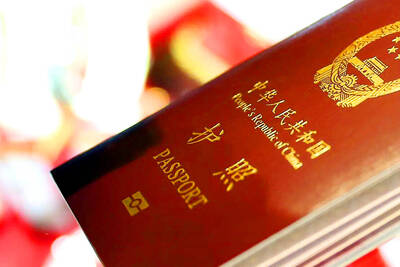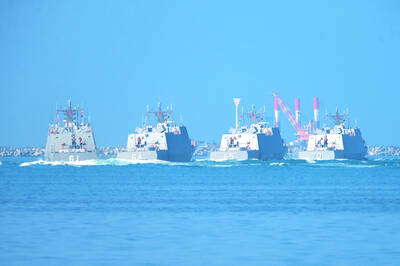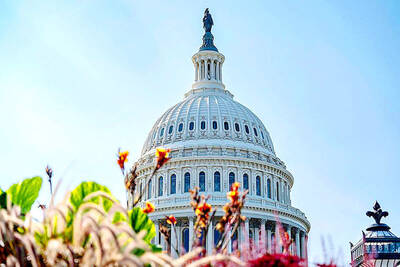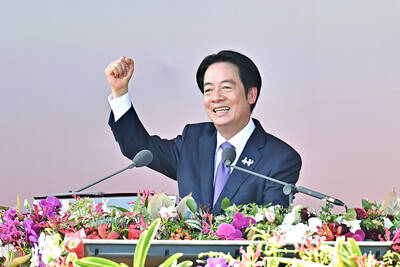While President Ma Ying-jeou (馬英九) has reiterated that the so-called “1992 consensus” was reached by Taiwan and China in 1992 to the effect that each side recognizes “one China, with each side having its own interpretation,” US cables recently released by WikiLeaks show that Chinese officials and academics clearly have a different understanding on what constitutes the “consensus.”
Both the Ma administration and China have stated that the consensus has been and should remain the foundation of cross-strait relations and dialogue.
In a cable dated Dec. 11, 2007, then-Chinese Nationalist Party (KMT) presidential candidate Ma told visiting American Institute in Taiwan Chairman Raymond Burghardt that the “one China, different interpretations” rubric of the consensus would be the key to any dialogue with China, adding that the KMT would reassure Beijing that its interpretation of the consensus is “steadfastly opposed to [Taiwan] independence.”
As recently as a press conference on Aug. 28, Ma said that despite the fact that no concrete results were reached during the cross-strait negotiations in 1992, both sides agreed that each side could have its own interpretation of “one China,” adding that while the term “1992 consensus” was indeed coined later, the idea of “one China, with each side having its own interpretation” did exist.
However, according to a leaked US cable dated Dec. 24, 2008, Taiwan Affairs Office Minister Wang Yi (王毅) mentioned “different interpretations” when the Chinese official discussed cross-strait relations with then-US ambassador to China Clark Randt.
“Both sides now accept and recognize the 1992 consensus, which means that both sides essentially accept there is only one China,” Wang was quoted as telling Randt, adding that in order “to solve [Taiwan’s] international space problem, the two sides must stick to the one China framework, because the improvement in cross-strait relations thus far has been on the basis of the one China principle.”
The international community accepts the “one China consensus” and UN-affiliated organizations also legally accept one China, therefore on the international stage “the rules are set and [they] cannot be changed,” Wang was quoted by the cable as saying.
Chinese academics expressed similar views in another cable dated March 21, 2008, issued by the US embassy in Beijing.
Zhou Zhihuai (周志懷), vice president of the Chinese Academy of Social Sciences’ Institute of Taiwan Studies, was quoted in the cable as saying that the consensus is flawed because “there is too much wiggle room for interpretation and because the Taiwan position of ‘each with its own interpretation’ is tantamount to [an] acceptance of two Chinas.”
While both sides want to improve relations, Zhou said, neither side has much room to make concessions.
The cable also quoted Sun Shengliang (孫盛良), director of the same institute’s economics department, as saying the “consensus was basically invented by KMT scholar Su Chi (蘇起).”
The cable showed Randt making a side note that it was the first time his embassy had heard the Chinese acknowledge this point.
In a recent forum held in Taipei, Taiwanese academics highlighted the different views on the “1992 consensus” held by officials in Taipei and Beijing, with Lo Chih-cheng (羅致政), a political scientist at Soochow University, saying: “China never talks about the 1992 consensus without mentioning its opposition to Taiwan independence.”
Tung Cheng-yuan (童振源), a professor at National Chengchi University said at the same forum that the real consensus between the Ma administration and Beijing was a “recognition of the one China principle” and “opposition to Taiwan independence.”

The Ministry of the Interior (MOI) is to tighten rules for candidates running for public office, requiring them to declare that they do not hold a Chinese household registration or passport, and that they possess no other foreign citizenship. The requirement was set out in a draft amendment to the Enforcement Rules of the Public Officials Election and Recall Act (公職人員選舉罷免法 ) released by the ministry on Thursday. Under the proposal, candidates would need to make the declaration when submitting their registration forms, which would be published in the official election bulletin. The move follows the removal of several elected officials who were

FOUR DESIGNATED AREAS: Notices were issued for live-fire exercises in waters south and northwest of Penghu, northeast of Keelung and west of Kaohsiung, they said The military is planning three major annual exercises across the army, navy and air force this month, with the navy’s “Hai Chiang” (海強, “Sea Strong”) drills running from today through Thursday, the Ministry of National Defense said yesterday. The Hai Chiang exercise, which is to take place in waters surrounding Taiwan, would feature P-3C Orion maritime patrol aircraft and S-70C anti-submarine helicopters, the ministry said, adding that the drills aim to bolster the nation’s offshore defensive capabilities. China has intensified military and psychological pressure against Taiwan, repeatedly sending warplanes and vessels into areas near the nation’s air defense identification zone and across

SENATE RECOMMENDATION: The National Defense Authorization Act encourages the US secretary of defense to invite Taiwan’s navy to participate in the exercises in Hawaii The US Senate on Thursday last week passed the National Defense Authorization Act (NDAA) for Fiscal Year 2026, which strongly encourages the US secretary of defense to invite Taiwan’s naval forces to participate in the Rim of the Pacific (RIMPAC) exercise, as well as allocating military aid of US$1 billion for Taiwan. The bill, which authorizes appropriations for the military activities of the US Department of Defense, military construction and other purposes, passed with 77 votes in support and 20 against. While the NDAA authorizes about US$925 billion of defense spending, the Central News Agency yesterday reported that an aide of US

NATIONAL DAY: The ‘Taiwan Dome’ would form the centerpiece of new efforts to bolster air defense and be modeled after Israel’s ‘Iron Dome,’ sources said President William Lai (賴清德) yesterday pledged to strengthen the nation’s air defense capabilities and build a “T-Dome” system to create a safety net against growing military threats from China. “We will accelerate our building of the T-Dome, establish a rigorous air defense system in Taiwan with multi-layered defense, high-level detection and effective interception, and weave a safety net for Taiwan to protect the lives and property of citizens,” he said in his National Day address. In his keynote address marking the Republic of China’s (ROC) 114th anniversary, Lai said the lessons of World War II have taught nations worldwide “to ensure that